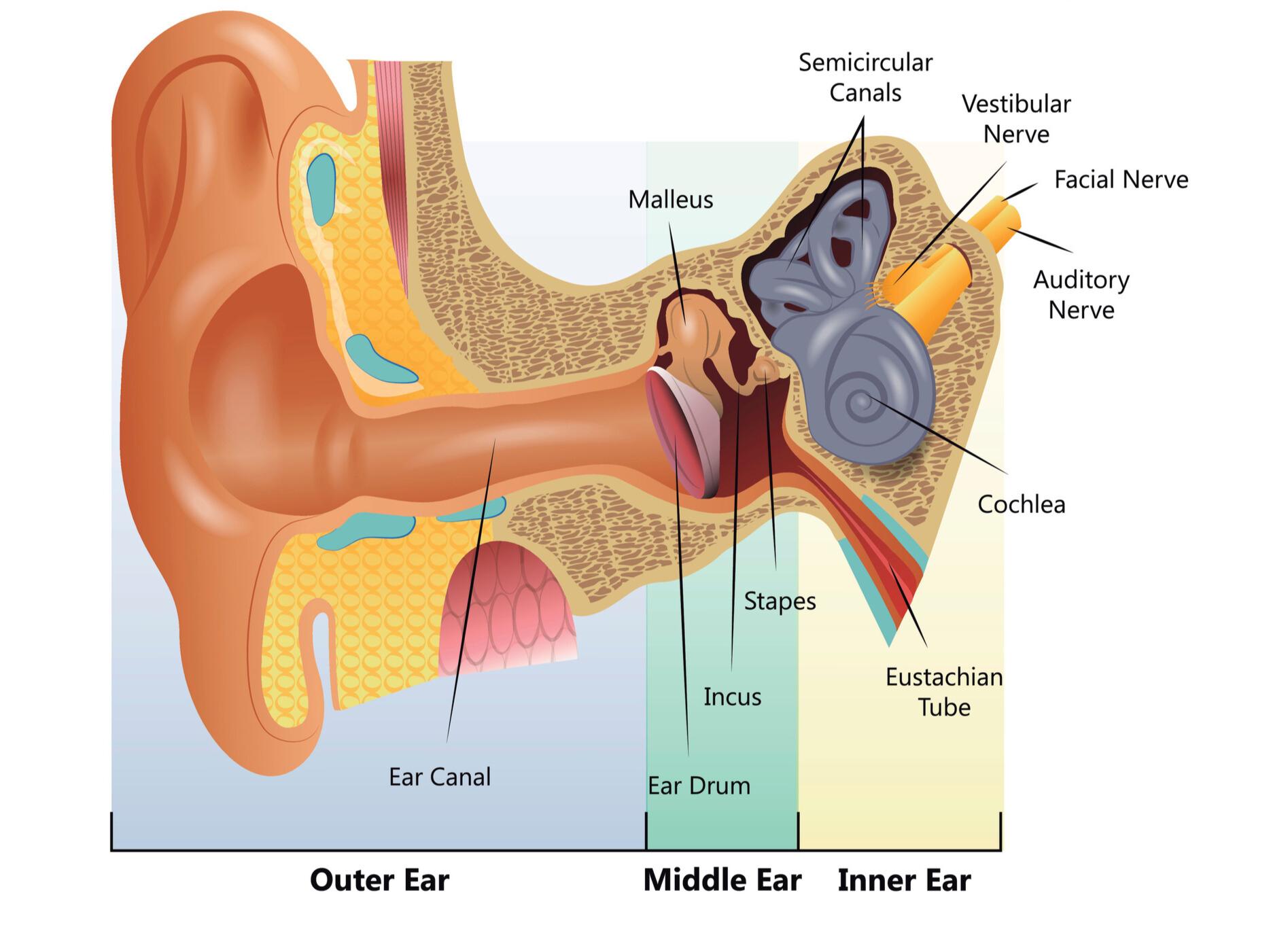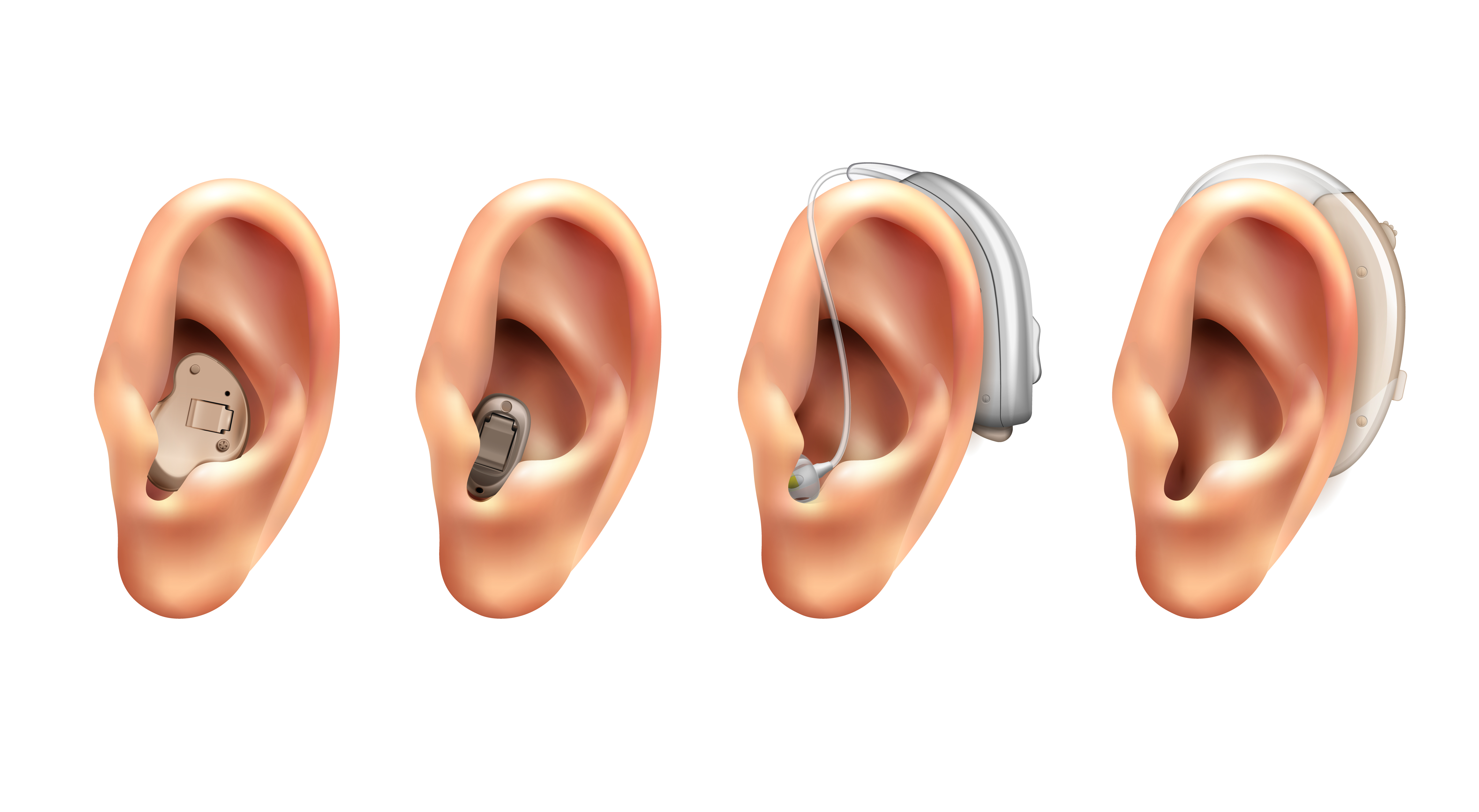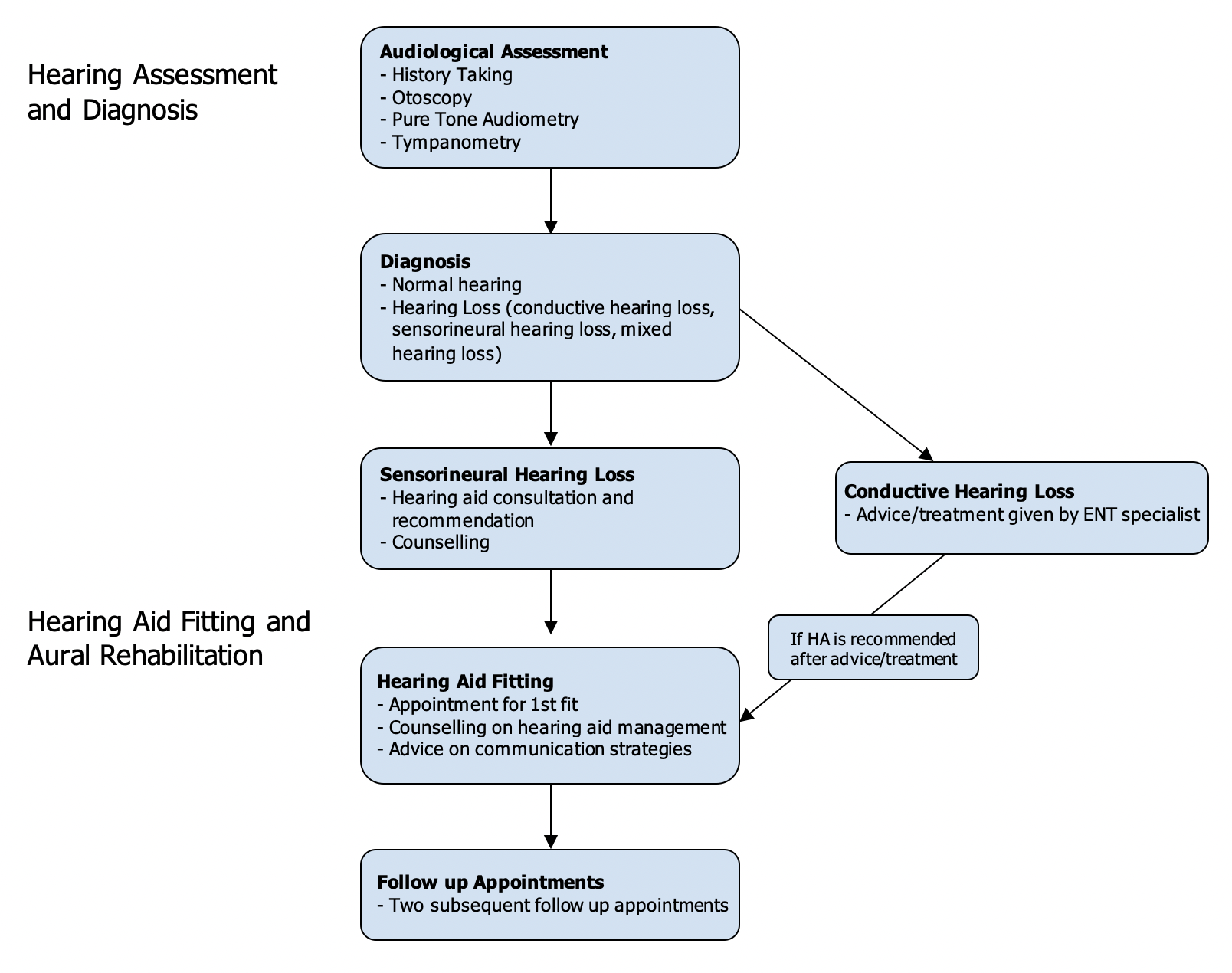Hearing Aid Services
How we hear
When we hear, sound travels along the ear canal and vibrates the eardrum (outer ear). The vibration causes movement of the three bones located in the middle ear. These bones move against the hearing organ (cochlear) and pass the vibrations to special hair cells within it (inner ear). The hair cells send electrical signals along the nerves to the brain, where we then perceive the sound.

Types of Hearing Loss
Hearing loss can be categorised into three different types:
Sensorineural Hearing Loss (SNHL): This type is caused by a loss of sensitivity of the cochlea or the hearing nerves. It can result from ageing, exposure to loud noise, infections, or diseases like Meniere's diseases. The resulting loss is usually permanent.
Conductive Hearing Loss (CHL): This type is caused by problems in the outer or middle ear and can often be rectified with medical or surgical treatment. Common causes include ear infections, fluid build-up, perforated eardrums, ear trauma or diseases like otosclerosis.
Mixed Hearing Loss: This type of loss is a combination of both sensorineural and conductive hearing losses. It may be caused by a single disorder or a combination of separate problems in the inner and middle/outer ear.
Degree of Hearing
Hearing loss can be categorised into five degrees based on the severity:
Normal: Individuals can communicate easily in most situations.
Mild: Individuals may struggle in noisy environments, hearing at a distance, or when the speaker is not facing them. Hearing devices may be helpful for those with mild hearing loss.
Moderate and Moderately Severe: Individuals may have difficulties hearing on the phone, watching television and hearing in noisy environments. Hearing devices will usually improve communication for such individuals.
Severe and Profound: Those with severe and profound hearing loss face great difficulty in communication across all environments. Hearing devices would be required for such individuals to improve communication.
Hearing Loss Symptoms
Recognising the signs of hearing loss is crucial for early intervention.
Common signs include:
- Perceiving others to be speaking unclearly, especially when the speaker is not facing you
- Having difficulties hearing on the phone
- Frequently requesting others to repeat their words
- Finding it hard to hear in group gatherings or in noisy settings
- Turning up the television at a volume much louder than others
Hearing Aids
A hearing aid is a small electric device designed to aid individuals with hearing loss by amplifying sounds.
There are four main types of hearing aids:
- Invisible-In-The-Canal (IIC)/ Completely-In-The-Canal (CIC)
- In-The-Ear (ITE)/ In-The-Canal (ITC)
- Behind-The-Ear (BTE)
- Receiver-In-The-Canal (RIC)/ Receiver-In-The-Ear (RITE)

Image by macrovector on Freepik.
At Gleneagles, our audiologists will recommend the type of hearing aids based on clients’ needs and suitability.






